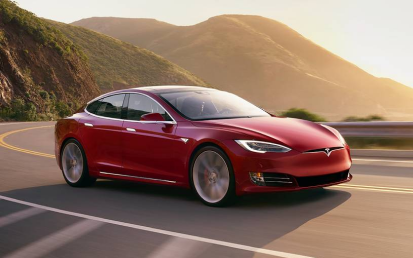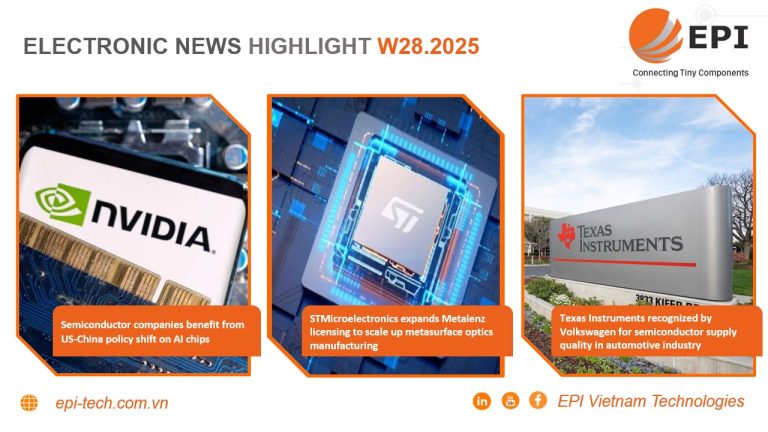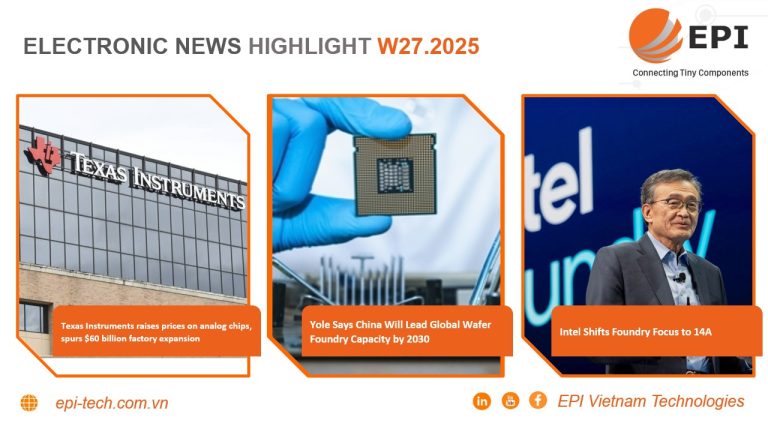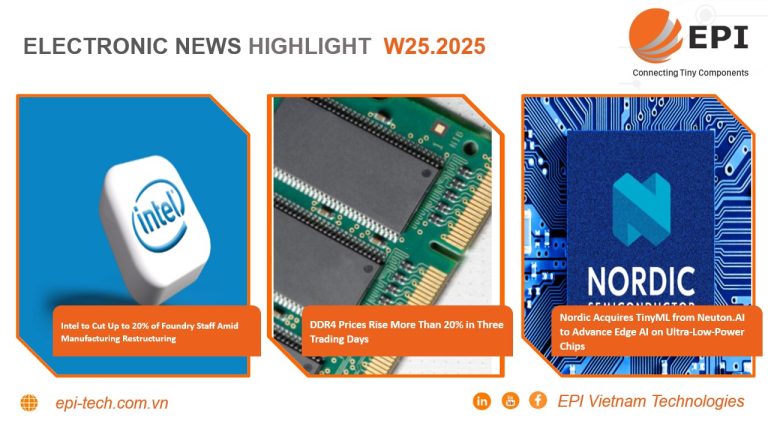ELECTRONICS NEWS HIGHLIGHTS W29.2023
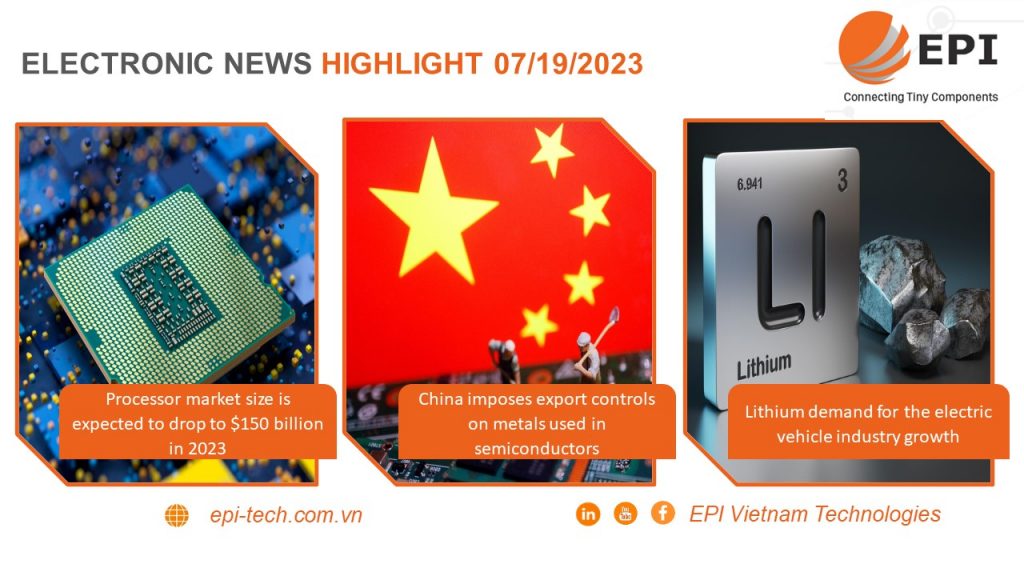
1. PROCESSOR MARKET SIZE IS EXPECTED TO DROP TO $150 BILLION IN 2023
According to the latest report from Yole Intelligence, the market for processors, including CPUs, GPUs, APUs, and FPGAs, fell to $157 billion in 2022 from $159 billion in 2021 due to weak consumer electronics demand. And it is expected to continue to decline to $150 billion in 2023.
Due to the current focus on generative AI applications, there is strong demand for machine learning hardware. Such trends are beneficial to the acceleration chip market for high-performance processing computers (HPC). For example, in the field of data center GPU, Yole Intelligence expects Nvidia to reach the highest revenue in history in the second quarter of fiscal year 2024. As for client CPU and GPU revenue, Yole Intelligence believes that starting from the third quarter of 2023, the total market will gradually begin to recover.
Details: Processor market size is expected to drop to $150 billion in 2023
2. CHINA IMPOSES EXPORT CONTROLS ON METALS USED IN SEMICONDUCTORS
The Chinese government has announced buyers of two metals used in computer chips and solar panels will need to apply for export permits, starting on Aug. 1. The metals, gallium and germanium, are also used in military applications.
The U.S. has been imposing trade limits for several years to try to restrict China’s access to semiconductor technology. In a statement, China’s Commerce Ministry said the new controls on exporting the metals are to safeguard China’s national interests.
That’s a scenario the U.S. and allied countries have long been worried about — not just for these two fairly obscure metals, but for the many minerals produced and processed in China in large quantities. Especially when China produces 60% of the world’s germanium and 80% of the world’s gallium, according to the Critical Raw Minerals Alliance. It also dominates supply chains for rare earth minerals used in many high-tech products, as well as the lithium, cobalt and graphite used in batteries.
Both the White House and an overwhelming majority of Congress see China’s dominance of mineral supply chains as an economic competition and a security threat.
Details: China imposes export controls on 2 metals used in semiconductors and solar panels
3. LITHIUM DEMAND FOR THE ELECTRIC VEHICLE INDUSTRY GROWTH
Electric vehicles require six times the mineral inputs of conventional cars, according to the International Energy Agency. The lithium required for the batteries that power those vehicles poses a challenge to the EV supply chain. Established mining companies currently don’t have enough lithium to supply the automotive industry.
The IEA estimated in a 2021 report that mineral demand for use in EVs and battery storage could grow 30 times by 2040.
General Motors, Volkswagen, Ford, BMW, and other large automakers plan for all their car sales to be electric by 2035. In the first quarter of 2023, sales of battery-powered cars, plug-in hybrids, and other electric vehicles in the U.S. rose 45 percent from last year.
Lithium prices rose more than 400 percent in 2021, stopping the rapid decrease of new battery costs. The largest deposits of the metal are in countries such as Chile, Australia, Argentina, Bolivia, and China. Mining, transportation, and processing are the biggest challenges for the supply chain.
Lithium supply remains low compared to the rapidly growing demand, which has seriously threatened the sustainability of the new-energy industry. To overcome this problem, lithium recycling from the growing number of spent batteries has aroused public attention, which not only helps secure a steady supply of the metal but also reduces environmental pollution.



 English
English  Tiếng Việt
Tiếng Việt 








